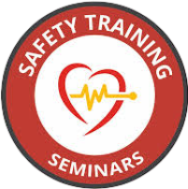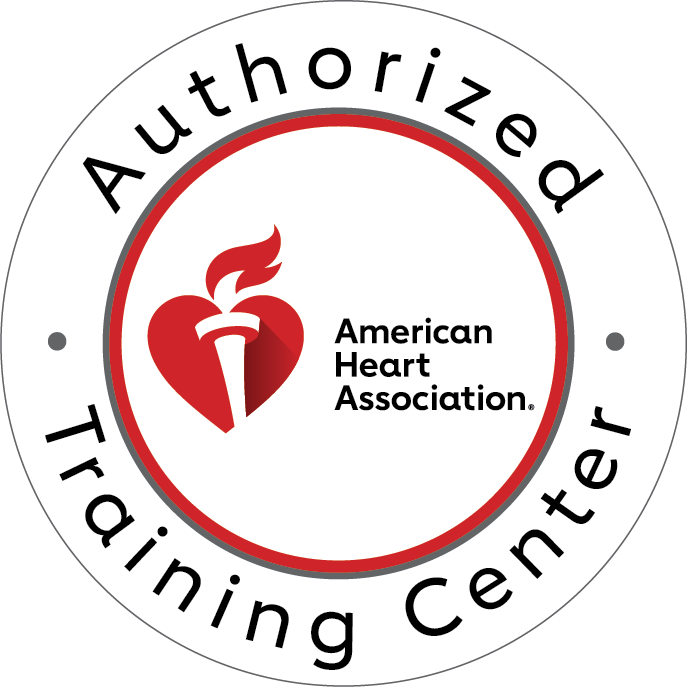Emergencies can happen unexpectedly in busy workplace. Whether it’s a sudden cardiac arrest or a minor injury, being prepared can make all the difference. This is where CPR and first-aid training come into play. In this blog, we’ll explore why workplace CPR and first-aid training are vital, how they benefit employees and employers alike, and what steps you can take to implement these life-saving programs in your organization.
Why Every Workplace Needs CPR and First-Aid Training
Emergencies happen. CPR and first-aid training equip employees with the skills needed to respond to emergencies quickly and effectively. According to the American Heart Association, nearly 400,000 out-of-hospital cardiac arrests occur annually in the United States alone. Immediate CPR can double or even triple a victim’s chance of survival. Having trained staff on-site ensures that help is readily available when seconds count.
Beyond saving lives, first-aid training helps manage injuries before professional medical help arrives. This training covers wound care, burns, and even fractures. By addressing these issues promptly, trained employees can prevent complications and improve recovery outcomes. Furthermore, the presence of trained individuals fosters a safer work environment, reducing anxiety and encouraging a proactive approach to safety.
The Legal and Ethical Imperative
Legal requirements and ethical responsibilities drive the need for CPR and first-aid training in workplaces. In many jurisdictions, employers must comply with Occupational Safety and Health Administration (OSHA) regulations, which mandate certain businesses to provide trained personnel. Non-compliance can lead to hefty fines and legal repercussions. However, beyond legal obligations, there is an ethical duty to ensure employee safety. Training empowers individuals to protect their colleagues and uphold a culture of care and concern.
Employers who invest in training demonstrate a commitment to their workforce’s well-being. This investment can lead to improved employee morale and loyalty. Workers feel valued when their safety is prioritized, resulting in increased job satisfaction and reduced turnover rates. Ethical considerations extend beyond compliance; they foster a supportive work culture that values human life.
The Cost of Inaction
Failing to implement CPR and first-aid training can have severe financial and human costs. A lack of preparedness can lead to prolonged recovery times, increased absenteeism, and higher insurance premiums. In emergencies, delays in response can result in preventable fatalities or permanent disabilities. The National Safety Council reports that workplace injuries cost U.S. employers an estimated $171 billion in 2019, encompassing wage losses, medical expenses, and administrative costs.
Beyond financial implications, the human cost is immeasurable. The emotional toll on coworkers and families can be devastating. Organizations that neglect training may face reputational damage, affecting their ability to attract and retain talent. By contrast, proactive training programs mitigate these risks and create a sense of security within the workplace.
How CPR and First-Aid Training Enhance Workplace Safety
Training equips employees with practical skills to assess situations, administer CPR, and provide first-aid care. These skills are invaluable in emergencies, allowing trained individuals to stay calm and take appropriate actions. CPR training includes techniques such as chest compressions, rescue breaths, and the use of automated external defibrillators (AEDs). First-aid courses cover bleeding control, shock management, and dealing with allergic reactions.
Organizations that prioritize training often see a reduction in workplace accidents. Trained employees become more safety-conscious, identifying and mitigating hazards before they escalate. This proactive approach contributes to a safer environment, reducing the likelihood of incidents that require intervention. Training fosters a culture of awareness and accountability, encouraging everyone to prioritize safety.
Building Confidence and Empowerment
Training empowers employees to act confidently in emergencies. Skilled individuals are more likely to step forward and provide assistance, potentially saving lives. This empowerment extends beyond the workplace, as trained individuals can apply their skills in everyday scenarios, benefiting their communities. Confidence gained through training bolsters teamwork and camaraderie, creating a cohesive and supportive work environment.
Employees often express gratitude for the opportunity to receive training. Knowing they possess life-saving skills boosts self-esteem and job satisfaction. Empowered individuals are more engaged and motivated, contributing positively to workplace dynamics. Ultimately, training instills a sense of pride in being able to make a difference when it matters most.
Tailoring Training to Your Workplace
Each workplace is unique, with distinct risks and challenges. Tailoring training programs to suit specific needs maximizes their effectiveness. Conduct a thorough risk assessment to identify potential hazards and areas of concern. This assessment informs the development of training modules that address the most relevant scenarios.
Consider factors such as the nature of your business, the number of employees, and the work environment. For instance, a manufacturing facility may require training focused on handling heavy machinery and chemical spills. In contrast, an office setting may prioritize training on ergonomic injuries and stress management. Customizing training ensures that it aligns with your organization’s requirements and prepares employees for the challenges they are most likely to encounter.
Selecting the Right Training Provider
Choosing a reputable training provider is crucial to the success of your program. Look for providers accredited by recognized organizations, such as the American Red Cross or the American Heart Association. These providers offer certified courses that adhere to industry standards and best practices. Verify their credentials and track record before making a decision.
Engage with trainers who have experience and expertise in delivering CPR and first-aid courses. Effective trainers use interactive methods, simulations, and real-life scenarios to enhance learning outcomes. Clear communication and engaging instruction ensure that participants retain essential knowledge and skills. Investing in quality training providers maximizes the benefits of your program and instills confidence in your employees.
Incorporating Technology in Training
Advancements in technology have revolutionized CPR and first-aid training. Online platforms and virtual reality simulations offer flexible and immersive learning experiences. Web-based courses allow employees to complete training at their own pace, accommodating varying schedules. Virtual reality simulations provide realistic scenarios, enabling participants to practice skills in a safe and controlled environment.
Integrating technology into training programs enhances engagement and retention. Interactive modules cater to different learning styles, ensuring that participants grasp concepts effectively. Additionally, technology facilitates ongoing learning and refresher courses, keeping skills current and up to date. Leveraging technology ensures that training remains accessible and relevant, adapting to the evolving needs of the modern workplace.
Sustaining a Culture of Safety
Training is not a one-time event; it requires reinforcement and maintenance to sustain a culture of safety. Regularly schedule refresher courses and drills to keep skills sharp and improve response times. Encourage employees to share feedback and lessons learned from training sessions to continuously improve the program.
Leadership plays a pivotal role in promoting safety consciousness. Managers and supervisors should lead by example, prioritizing safety initiatives and integrating them into daily operations. Recognize and reward employees who actively contribute to a safe work environment, reinforcing positive behaviors and motivating others to follow suit.
Overcoming Challenges and Barriers to Implementation
While the benefits of CPR and first-aid training are clear, organizations may face barriers to implementation. Common challenges include budget constraints, scheduling conflicts, and resistance to change. To overcome these obstacles, start by emphasizing the return on investment and long-term benefits of training. Highlight cost savings, reduced absenteeism, and enhanced employee morale.
Flexible training schedules and online options address time constraints. Engage employees early in the planning process, gathering input and feedback to foster buy-in and commitment. Address concerns and misconceptions through open communication, providing evidence of training’s impact on workplace safety and well-being.
Measuring the Impact of Training
To gauge the effectiveness of training programs, establish metrics for evaluation. Key performance indicators may include the number of trained employees, response times during drills, and reductions in workplace accidents. Conduct post-training surveys to assess participant satisfaction and gather insights for improvement.
Regularly review and update training content to align with emerging trends and best practices. Analyze data to identify areas for enhancement and demonstrate the tangible outcomes of training investments. By measuring impact, organizations can make informed decisions to optimize their safety initiatives and achieve lasting results.
Conclusion – CPR and First-Aid Training
In conclusion, workplace CPR and first-aid training are indispensable components of a robust safety strategy. These programs empower employees to respond effectively to emergencies, protect their colleagues, and contribute to a culture of care and responsibility. By investing in training, organizations fulfill legal and ethical obligations, enhance workplace safety, and build a resilient and proactive workforce. Take the first step towards a safer workplace by implementing CPR and first-aid training today.








